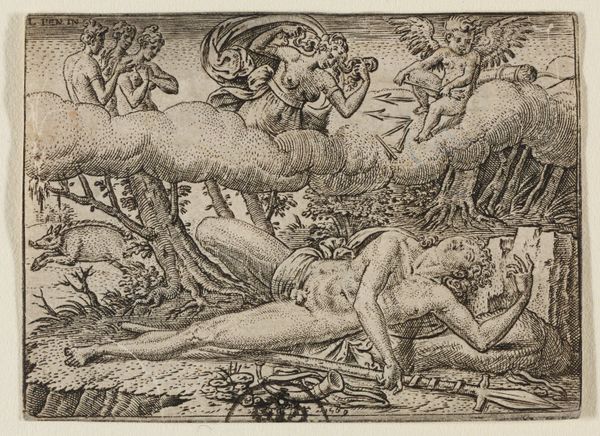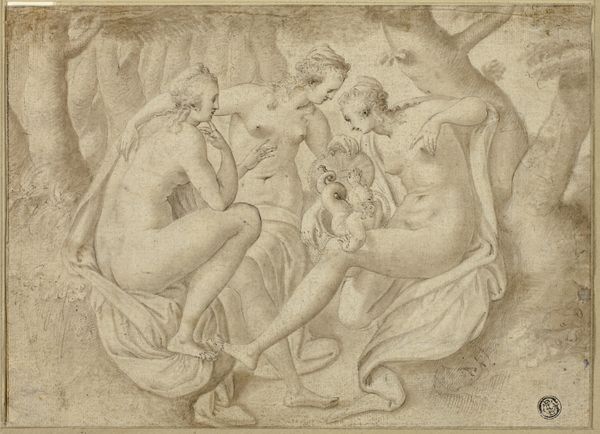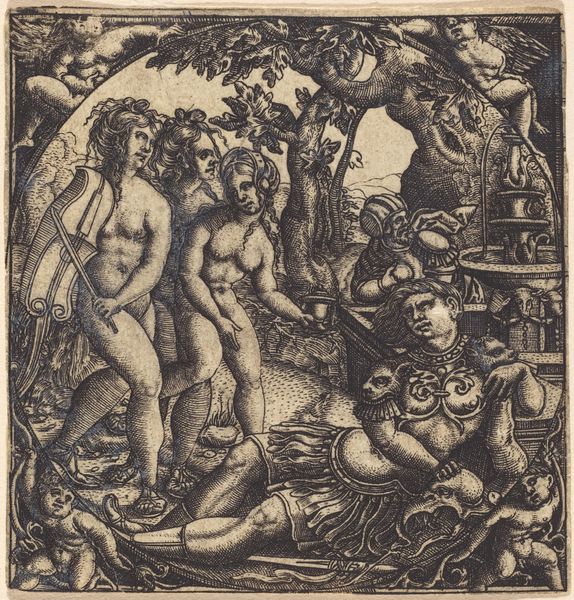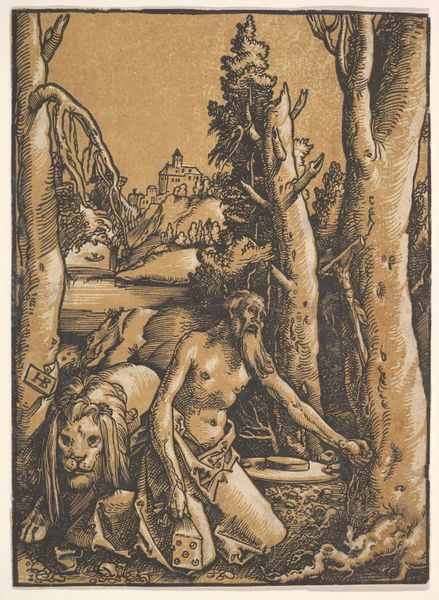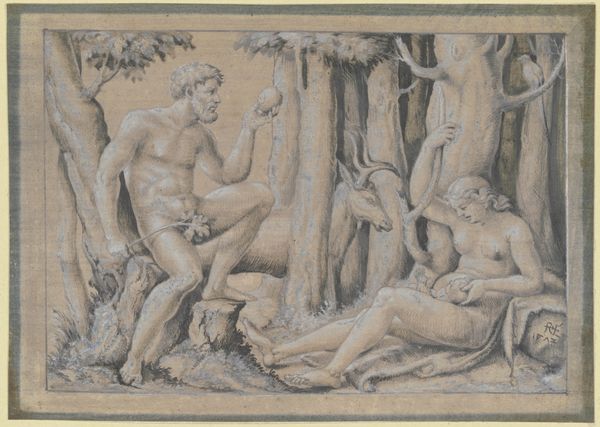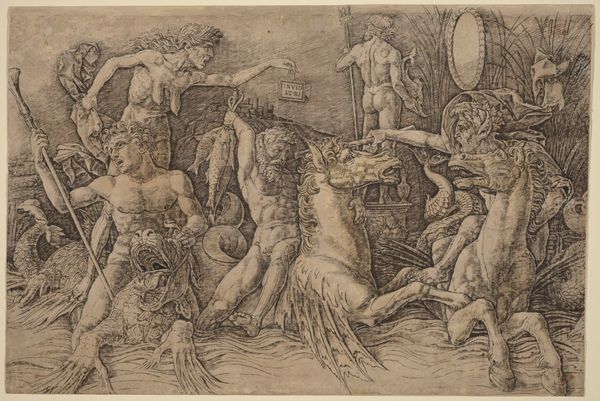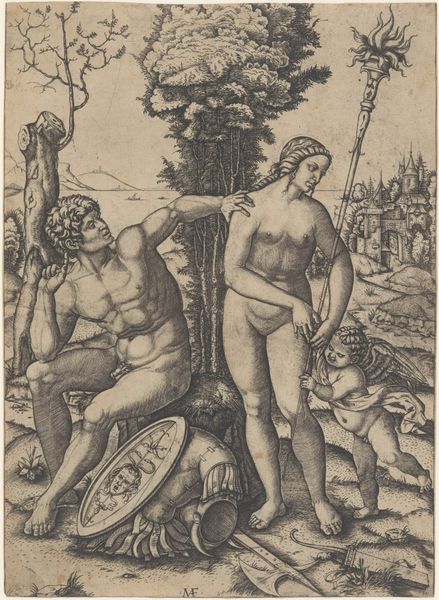
drawing, print, paper, engraving
#
drawing
#
allegory
# print
#
landscape
#
mannerism
#
figuration
#
paper
#
oil painting
#
history-painting
#
nude
#
engraving
Dimensions: 118 × 162 mm (sheet)
Copyright: Public Domain
Editor: So, this is "Nymph of Fontainebleau," made after 1545, by an anonymous artist. It's an engraving, printed on paper. It has an old master-like feel and the shading appears very intentional. How should we think about this work? Curator: Focus on the engraving itself. The reproductive print democratizes access; this isn't a unique oil painting hoarded by the elite. Consider the labor involved, the skilled hand replicating a design meant for circulation. How does the engraving’s materiality affect the subject's meaning and its access to wider viewership? Editor: You mean the way the artist made it accessible influences our reception? Curator: Exactly. Look at the figure. Is she presented as an untouchable ideal, or is there something about the texture of the print, the lines that create her form, that brings her closer to our world, suggesting an industrial interpretation of the female nude? The availability of prints made this type of imagery more common... something people may have hung on the wall or kept as a novelty item. Does this reduce our modern conceptions of 'high art?' Editor: That's an interesting idea. So, rather than focusing solely on the idealized figure or the mythological references, we're considering how the medium itself shapes our understanding of the subject matter. Curator: Precisely. And further, what kind of market demands fueled the production of prints like this? The Fontainebleau school was attached to the royal chateau; its artistic output was therefore closely bound up with patronage and power. But by extension, the prints are a capitalist response to patronage... they are distributed by the artist to cultivate other patronage and power structures beyond the royal sphere, effectively broadening the influence and accessibility of Renaissance artistic production. Editor: I never thought of it that way. Considering the material and how it circulated adds a whole new dimension to the artwork. I'll keep that in mind. Curator: I'm glad. This perspective can truly transform your interpretation of all artwork.
Comments
No comments
Be the first to comment and join the conversation on the ultimate creative platform.
